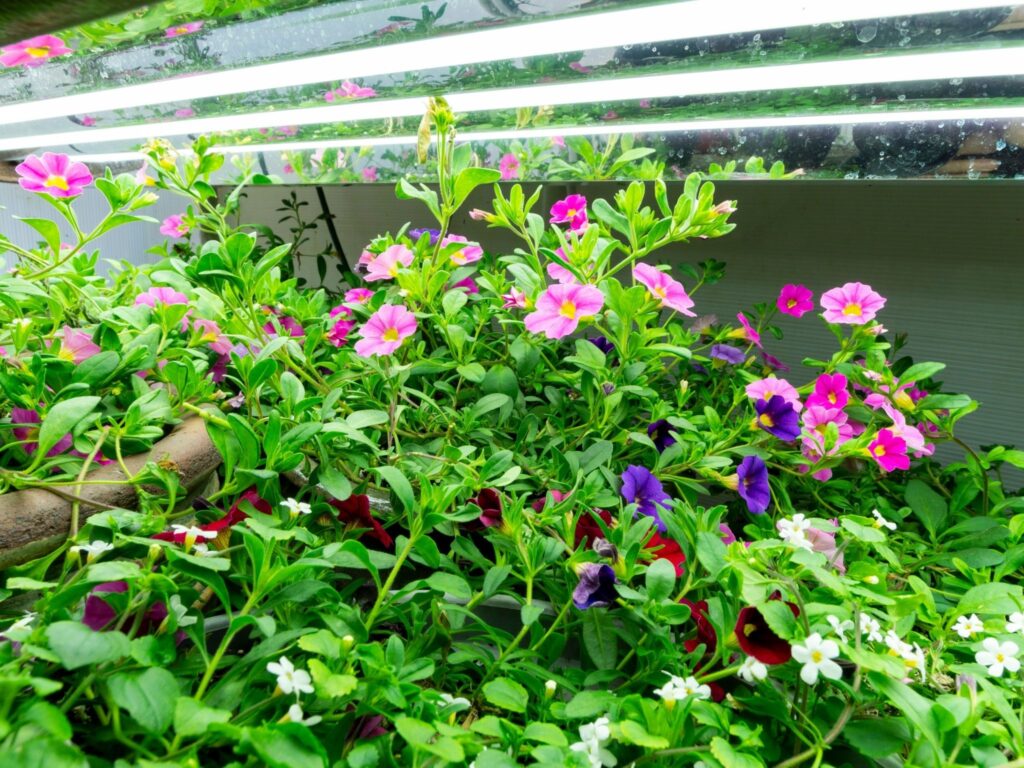If you are gardening indoors, then you probably already know how frustrating it is to provide your plants the proper light they need. Sunlight is the primary necessity for all garden plants, and without it, they won’t be able to thrive! That is where grow lights come along.
But is a grow light considered indirect sunlight? Is this light enough for plants to thrive on? Read on to find out.

Is a Grow Light Considered Indirect Sunlight?
You may have come across the term, ‘bright, indirect light’ when it comes to meeting your plants’ needs. Indirect light is when the sun’s rays won’t travel directly from the sun to the plant. Rather, it will bounce of something before that.
Plants that are under indirect light would cast blurry and indistinct shadows, and this light is equivalent to about 800-2,000 foot candles.
A grow light can be considered as either indirect or direct sunlight. This all depends on how much power the grow light has. For most of the grow lights gardeners use, grow lights are considered between indirect and low light, leaning towards the latter.
Think of it this way: Sunlight can also be considered as either direct or indirect. It just depends on where the plant is placed and how the sun hits the plants.
Direct sunlight is high intensities of light, which can be achieved with certain lights as well. Like sunlight being considered as indirect light, it also depends on the placement of the grow light and the intensity it is set on.
Because of this, you won’t have to worry about your plants getting burnt, provided that you set the brightness and power of your grow light properly and that it’s at an appropriate distance from the plants.
That said, direct sunlight and grow lights still have their distinct differences, which I will be explaining below.
Direct Sunlight vs Grow Lights
Now, you’re probably wondering about how to grow lights that differ from sunlight, and if the former is enough for your plants.
Generally, sunlight would give off better quality lights for plants. Plants would use lights from the blue and red spectra, which are already available from the sun.
Full-spectrum grow lights can provide such needs, so you can get almost an equal quality of light when using these growth lights. They can also be better when it comes to giving ideal light intensity, especially if you grow plants that need intense light indoors. While outdoor light is intense, the sun filtered from windows won’t be as intense and is considered indirect light.
However, if you were to use only standard fluorescent bulbs, it only provides light from the blue spectrum, while incandescent lights would provide light from the red spectrum. This can affect the plant’s growth negatively.
There is no better light, as this all depends on the plant’s individual requirements.
Wrapping It Up
It can be confusing trying to figure out the difference between direct and indirect light. When your plant requires indirect light, you can use either sunlight or grow lights, as both are considered indirect provided that you place your plant in strategic areas. When using a grow light, you can change the intensity and temperature so it can match your plant’s needs.
Now that you know more about grow light and indirect light, make sure you are well acquainted with what your plant needs so it gets the right amount of light to grow better. Good luck!
Inquiring about a red light well developed, round, strong built, always lit inside a household for something other than growing plants?Medicinal?